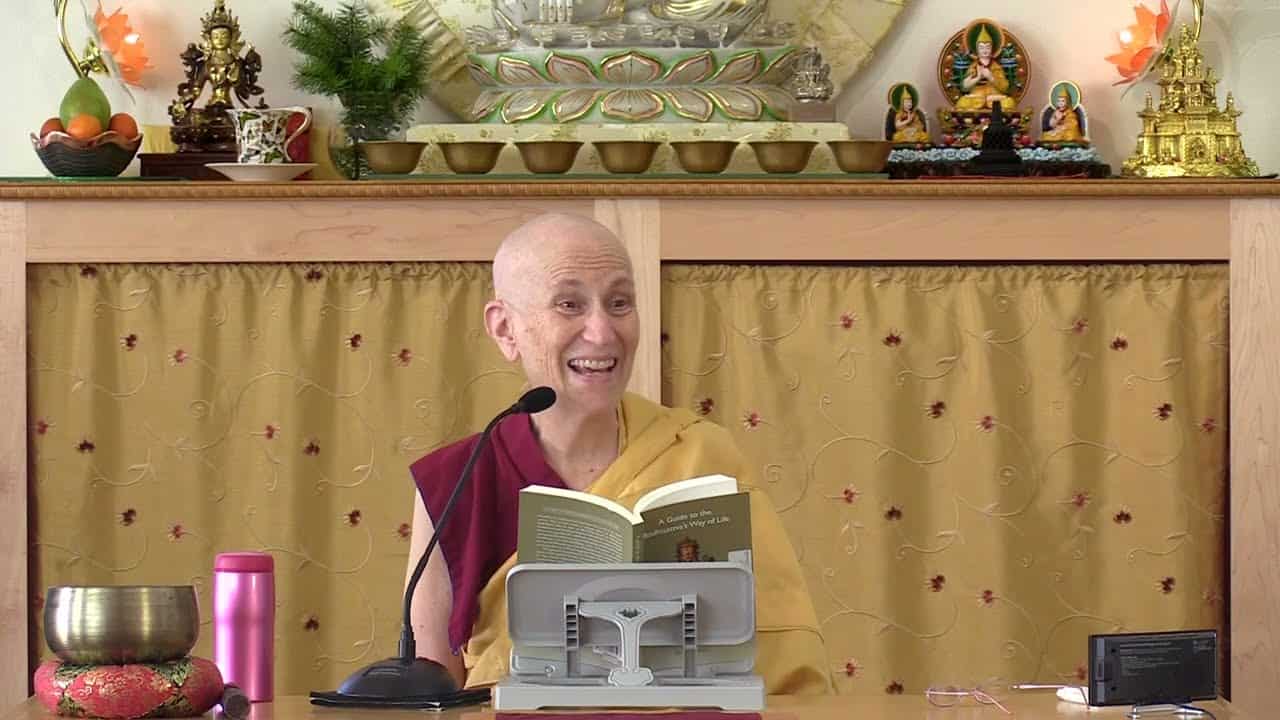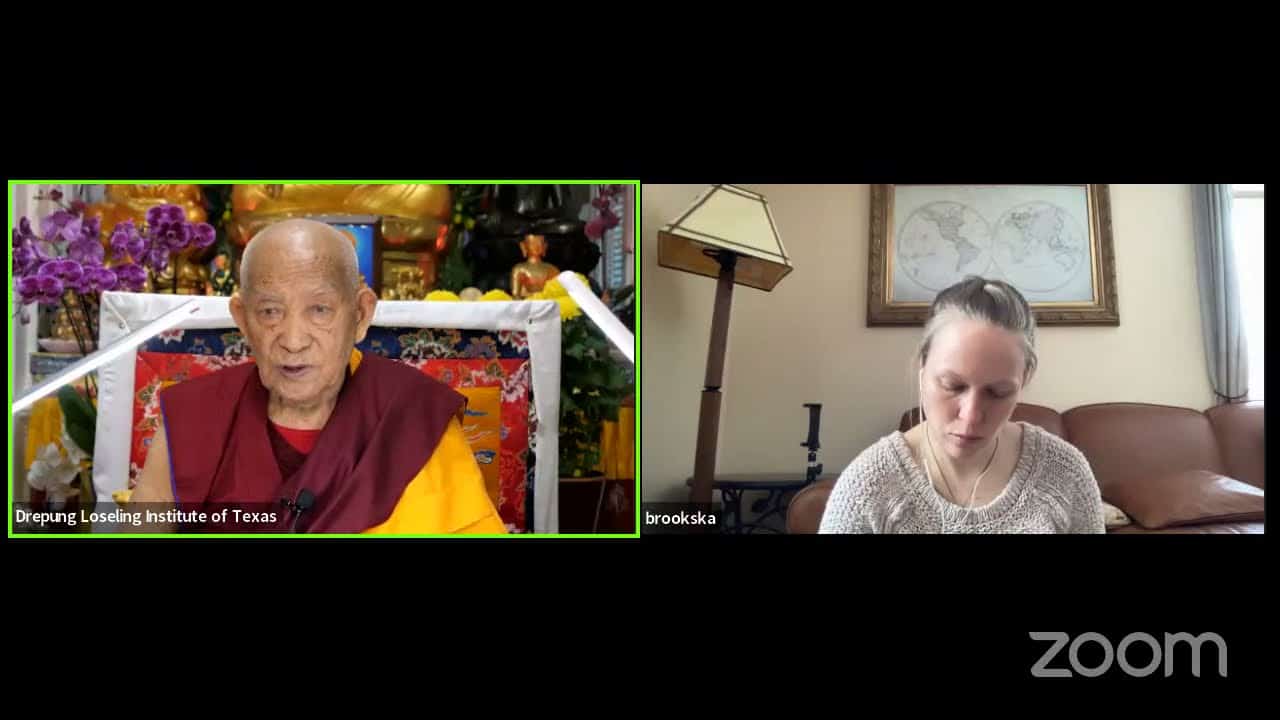Feeling
51 Samsara, Nirvana, and Buddha Nature
Part of an ongoing series of teachings (retreat and Friday) based on the book Samsara, Nirvana, and Buddha Nature, the third volume in The Library of Wisdom and Compassion series by His Holiness the Dalai Lama and Venerable Thubten Chodron.
- Reviewing the three conditions for contact
- Three types of feeling
- Pleasurable, painful or neutral feeling
- Five types of feeling based on physical and mental aspects
- Examining physical pain and mental pain
- Six types of feeling from six objects
- Monitoring our feelings and our reactions to those feelings
- Relationship between feeling and craving
- Feeling and ripening of karma
Samsara, Nirvana, and Buddha Nature 51: Feeling (download)
Contemplation points
- The more we contemplate the twelve links, the more we will understand what our lives and the lives of others are about, and the more we will have a strong intention to be free of samsara and have strong compassion and bodhicitta so that we can help others be free from samsara. Spend some time with this. Bring to mind something you are experiencing right now and try to understand it in terms of the twelve links.
- Imagine the feeling of pain. It could be a past or current experience of pain. Consider: Where does pain hurt? Is it physical or mental? How does mental pain affect physical pain? If the pain is in the present, try to mentally draw a line exactly around where the pain is. What do you observe?
- Why is it that the space between feeling and craving is one of the places where we can break the forward motion of dependent origination and stop the creation of karma? Describe this in your own words. Take some time to practice observing your feelings without reacting to them. How can you prevent craving from arising?
- Why does craving for a good experience, such as having a good meal, create karma? Can you trace the process in your own mind?
- Which thoughts and ideas do you hold that bring about pleasant and unpleasant feelings? What does this tell you about where you are in your practice?
- Observe your feelings with mindfulness and introspective awareness and identify pleasant, unpleasant, and neutral feelings. Be aware that they arise after contact with an object. Watch how instantly craving arises for pleasant feelings to continue and for unpleasant feelings to cease. How do all these feelings as well as the craving they provoke affect your life? How do you respond to them? Are there certain objects that it would be helpful to avoid temporarily so that you can work on reducing the craving that results from contact with them?
Venerable Thubten Chodron
Venerable Chodron emphasizes the practical application of Buddha’s teachings in our daily lives and is especially skilled at explaining them in ways easily understood and practiced by Westerners. She is well known for her warm, humorous, and lucid teachings. She was ordained as a Buddhist nun in 1977 by Kyabje Ling Rinpoche in Dharamsala, India, and in 1986 she received bhikshuni (full) ordination in Taiwan. Read her full bio.


